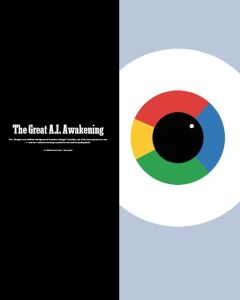Join getAbstract to access the summary!

Join getAbstract to access the summary!
Gideon Lewis-Kraus
The Great A.I. Awakening
How Google used artificial intelligence to transform Google Translate, one of its more popular services – and how machine learning is poised to reinvent computing itself.
The New York Times Magazine, 2016
What's inside?
Google Translate is today’s pocket language dictionary, but there is so much more to it than meets the eye.
Recommendation
Writing for The New York Times Magazine, Gideon Lewis-Kraus’s article breaks down a complex, multilayered story of artificial intelligence into an absorbing, detailed read. The story of Google Translate involves many prestigious players, who all worked together to create an impressively improved translation tool in far less time than originally expected. This is a tale of the meeting of many minds to create a single truly powerful artificial one that will have future uses beyond translating from one language to another.
Summary
About the Author
Gideon Lewis-Kraus is a regular contributor to The New York Times Magazine, writing on topics including technology and travel.

















Comment on this summary